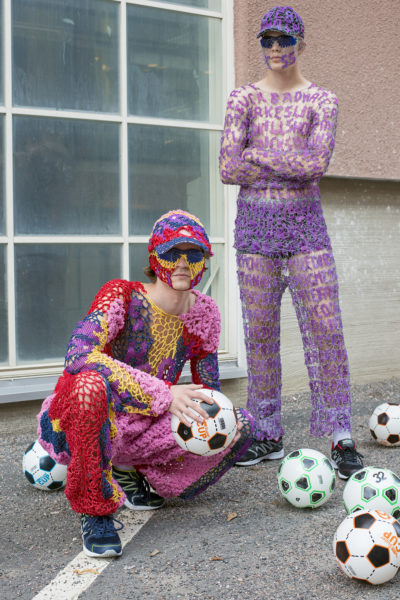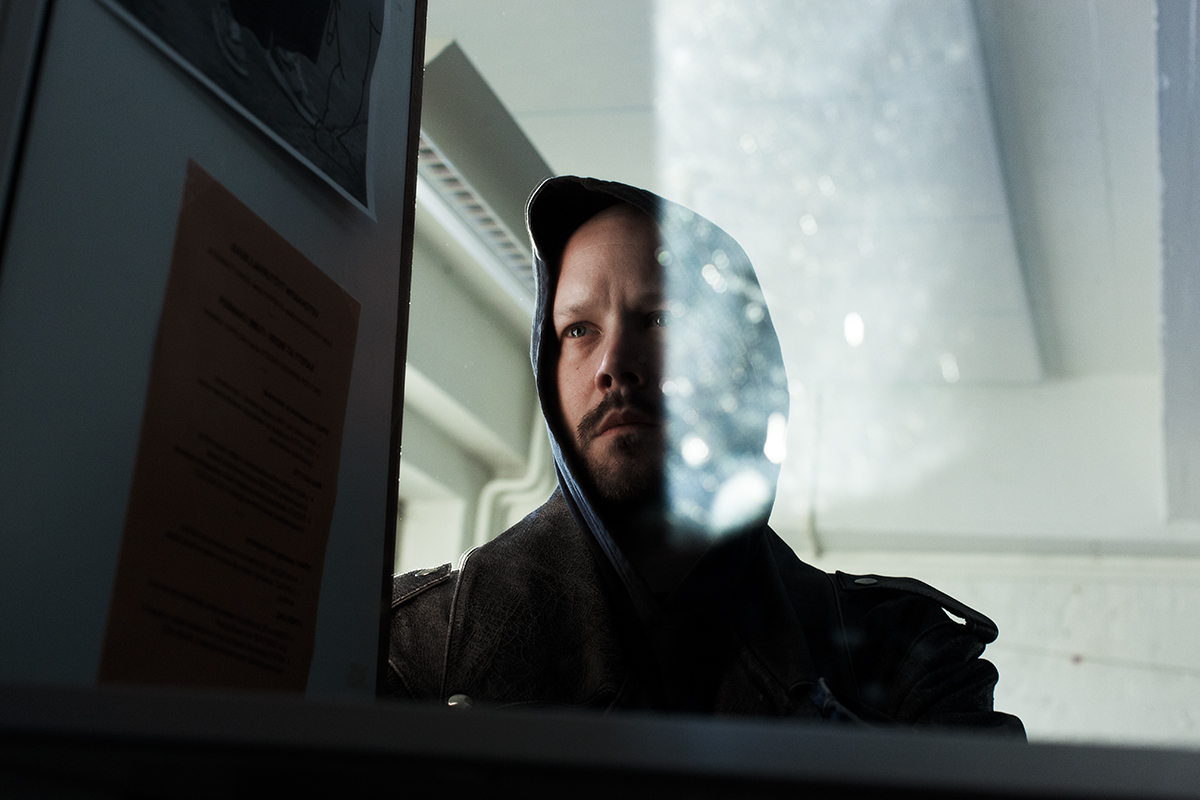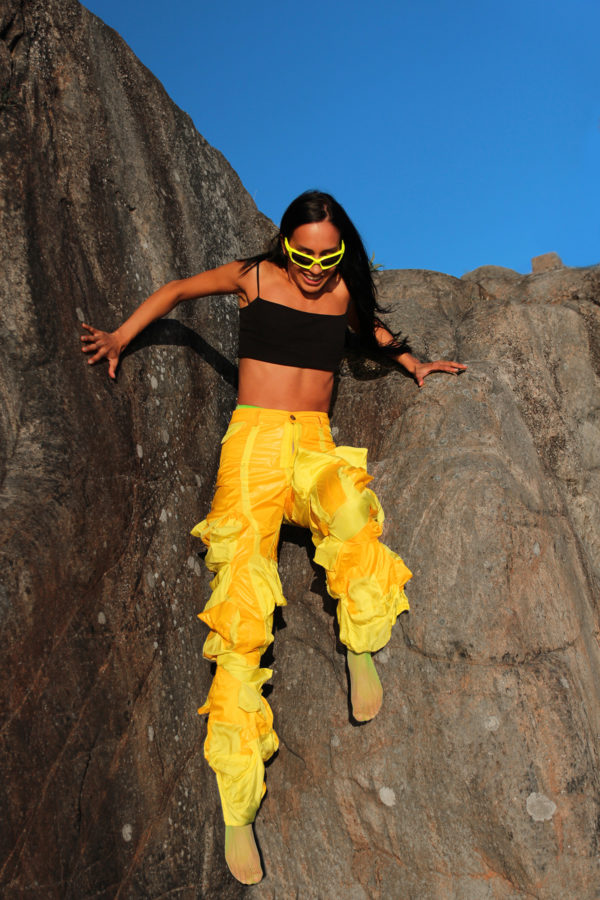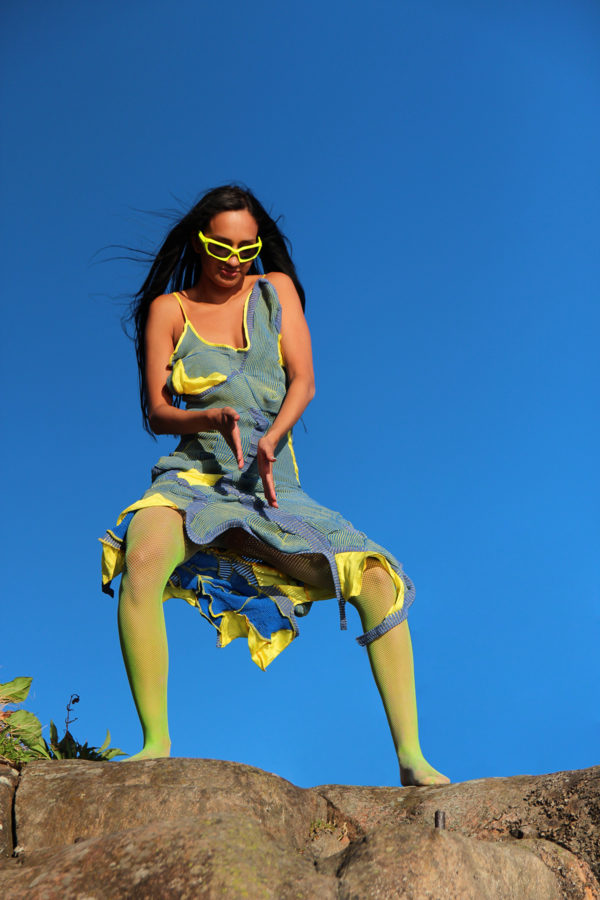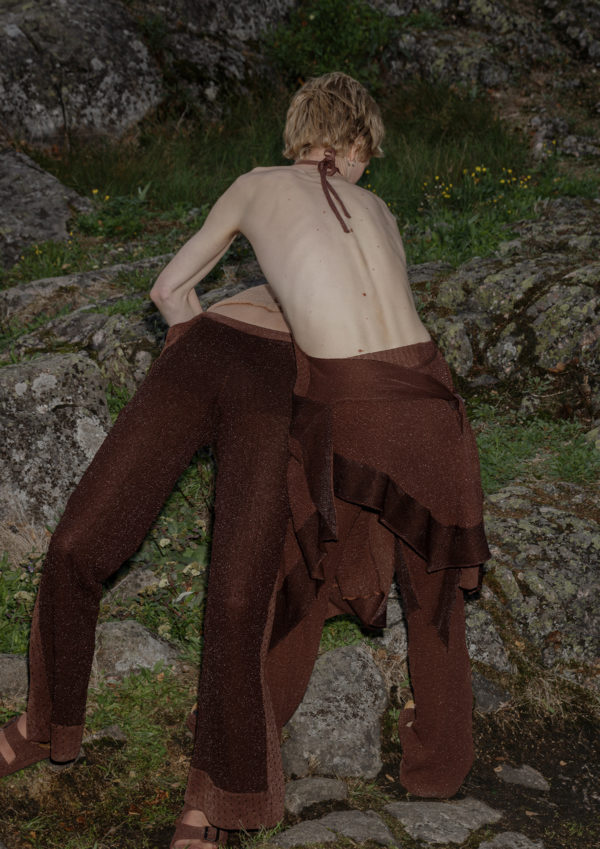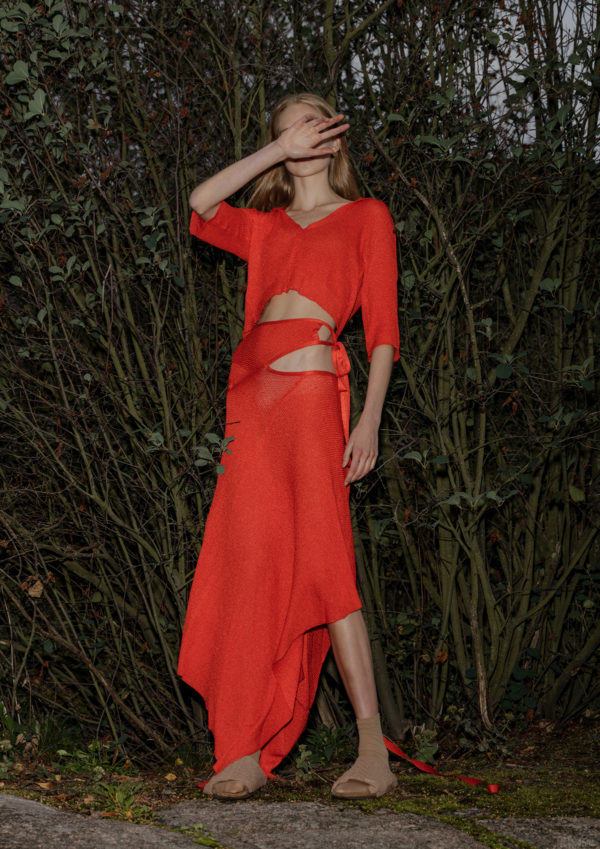Every month, Institut finlandais highlights creatives whose work sheds light on today’s Finland and France. In October, we interviewed Tuomas Laitinen during the Paris Fashion Week when the fashion students of Aalto University showcased their collections at the institute. Laitinen is a lecturer at Aalto University, a fashion designer and one of the founders of the SSAW magazine.
You have worked in different fields of the fashion industry for a long time. In addition to teaching at Aalto University, you have worked as a fashion designer and you are also one of the founders of the well-known SSAW magazine. Is it important for you to be able to view the world of fashion from various angles? Do you think it influences the way you guide or teach your students?
I have drifted into different positions very naturally, which is in a sense a sign that you can get along in many jobs with designer’s experience and education. The clothing remains only a small fraction of the fashion industry and the world built around them is equally important. This is why nowadays fashion designers have to be versatile and understand different points of view. For example, when working as a stylist, it is very effortless for me to communicate with my clients’ design and production teams because I have also worked as a designer myself.
During the Paris Fashion Week in September, seventeen fashion design students of Aalto University presented their bachelor and master collections at the Institut finlandais. Do you think there is a certain approach, related to aesthetics, material or design process that distinguishes Aalto University from other fashion schools? Do you think it is meaningful to talk about the influences of one’s national identity, background or cultural heritage in the field of fashion?
In today’s political situation, it is rather precarious to talk about national influences. In my opinion, the young Finnish designers have quite similar backgrounds as their contemporaries in Western Europe. And compared to my generation, they have grown up in a global world. I would say that what distinguishes Aalto from other universities is that we are more open-minded, we do not categorize the students. They can experiment in women’s and men’s clothing design and in material design without restrictions. In many schools, these are considered to be very separate disciplines.
Collection by Noora Ainasoja. Photography: Nicca Sinervo. Model: Stella Yellowhair.
In 2012, Siiri Raasakka, Tiia Sirén and Elina Laitinen won the Grand Prix in the Hyères Festival. This year is often considered to be the year of international breakthrough for the fashion department of University Aalto and also for the Finnish fashion scene. Looking back six years later, how do you see that period now? What are the changes that have taken place in teaching during the last ten years, and what changes would you like to see happen in the next ten years?
Certainly, Hyères raised global public awareness about us. After that, we have grown and developed year by year. We have never had any master plan, we have only been concentrating on our work and developing it persistently, which has paid off. In a typical Finnish way, we have not boasted too much. We understand that development takes time and in many aspects, we are still in the beginning. Of course, things have changed majorly after 2012. Nowadays, fashion influencers from talent scouts to top international press come to Helsinki every year in May to see our students’ fashion show. The fashion industry is under constant change and therefore, it is hard to say what will happen in the next ten years. At least I hope fashion would become more ethical and durable than today and that a good design would be valued above a designer status.
It is essential to work in fashion houses before launching your own brand.
In interviews, you often emphasize that it would be important for the students to first create a career in international fashion houses before starting to think about creating their own brand. How it is possible to balance between your artistic visions and with the pressure and conventions imposed by the fashion industry?
It is essential to work in fashion houses before launching your own brand. There, the newcomers create valuable contacts and understand how the entire business works in general. In addition, it is better to make your first mistakes under someone else’s watch than to risk your own finance. The working life is full of compromises whether you are an independent designer or a creative director of a big fashion house. The only difference is that the latter usually has the support of a big crew. Fashion often touches on art, but fundamentally, it is business.
It is often said that the time when you and professor Pirjo Hirvonen started working at Aalto University marks the renaissance of the fashion department. You adopted the high standards and the importance of critique that are employed in international fashion schools. How would you define your teaching philosophy? What do you think are the most important qualities of an instructor and what qualities do you appreciate in students?
Honestly speaking, I have not really had the time to think about my teaching philosophy. I try to see every student as an individual and seek to find the talent which makes each of them special and unique and encourage them to fully devote to that talent. In students, I value their openness and healthy criticism towards their own design as well as towards the fashion industry in whole. I admire also their courage of throwing themselves into new challenges.
Collection by Milla Lintilä. Photography: Ernest Protasiewicz.
In 2019, Aalto University and Institut finlandais will collaborate on a new residency program, the Finnish Studios in Paris. In your opinion, how can the students benefit from the residency period in Paris?
Paris still continues to be the city where fashion is most strongly present and is an essential part of the urban culture. The residency period can be an eye-opening experience for the students in many ways and it offers perfect surroundings to do some background work for their final collection. Paris is full of hidden gems from markets to museums, galleries and concert venues. I find it important that all the students participating in the residency program could find their own Paris.
I guess I would be a very similar teenager today as I was back then.
If you were a master student and you had the opportunity to participate in a residency programme in Paris, how would you spend your time there?
I have lived in Paris for years and already as a teenager, I spent a lot of time there just by myself. I guess I would be a very similar teenager today as I was back then. I would stroll from one store to another exploring the garments of great couturiers, I would look for old magazines and books from flea markets and try to sneak into runway shows of Paris Fashion Week without any invitation. I would hang around in Bar Pop In, in rue Amelot, with other like-minded dreamers, even though today all the customers must be middle-aged, just like me.
Who would you say is the most inspiring figure of Finnish fashion and design?
We have an enormous number of beloved “classics” like Vuokko Nurmesniemi, Ilmari Tapiovaara, Eero Aarnio and Alvar Aalto, but now it is time for something new. All the pioneers of Finnish design have been rebels of their time and the young Finnish fashion designers have the same creative madness and urge to break boundaries as their predecessors.
